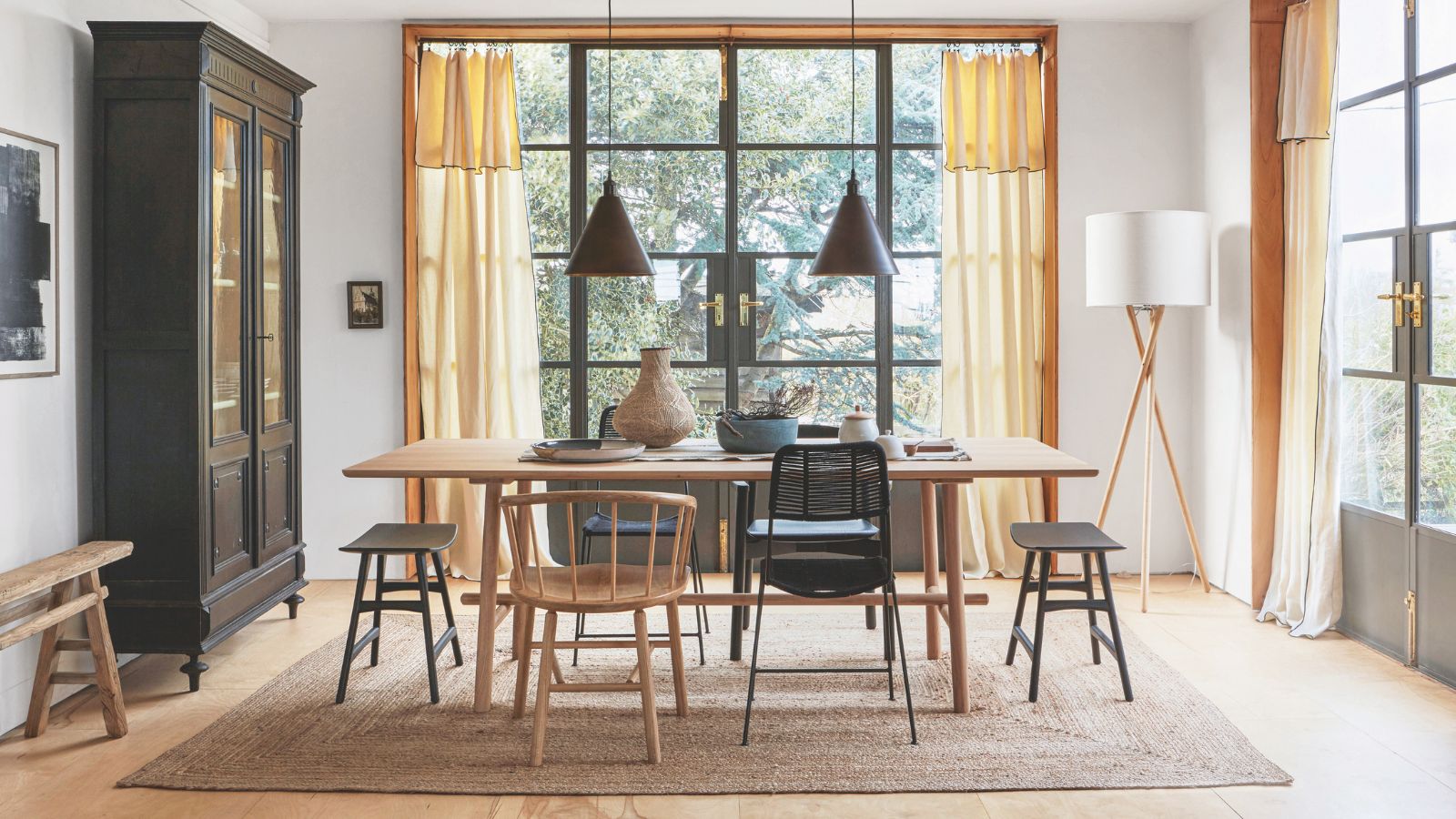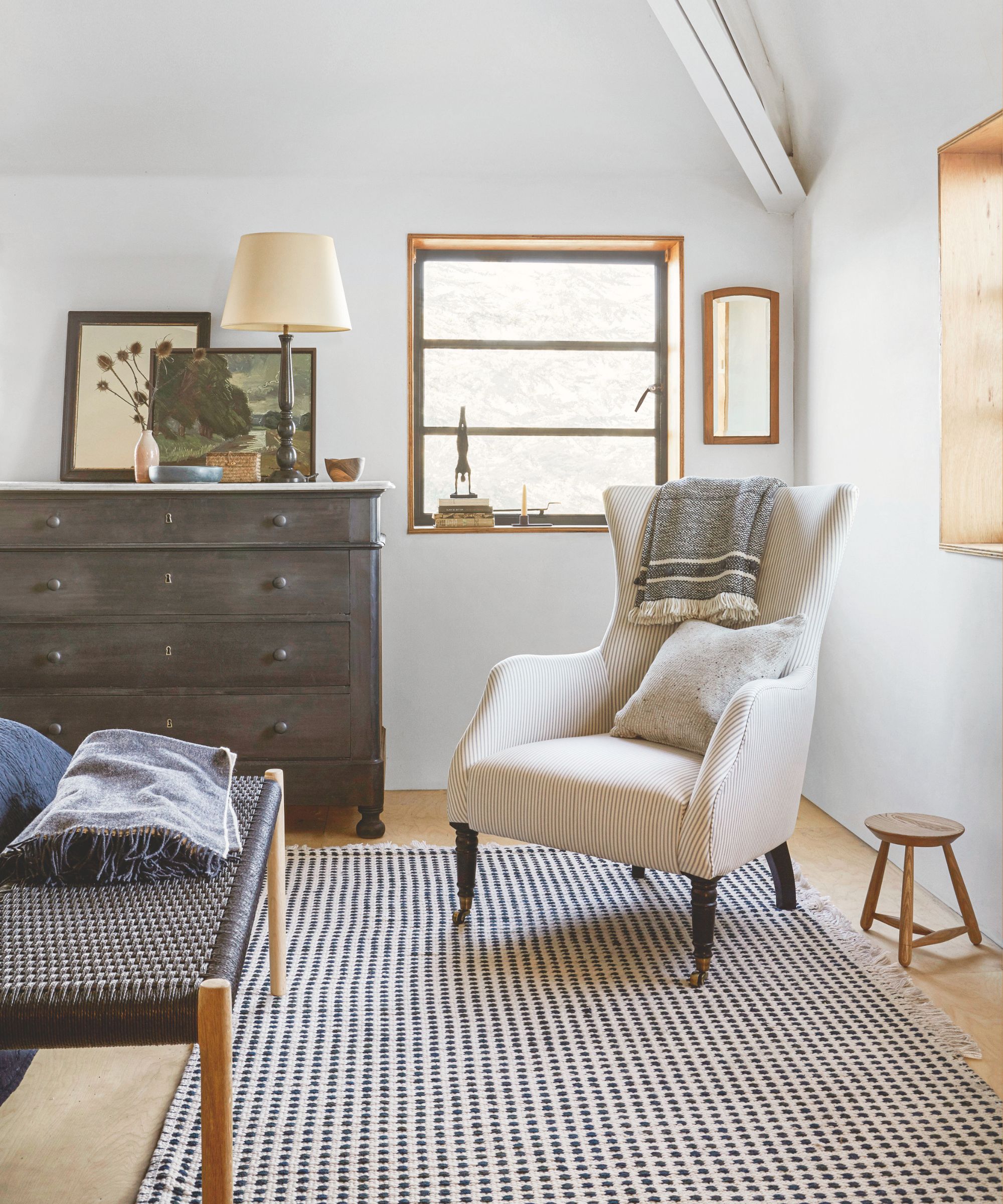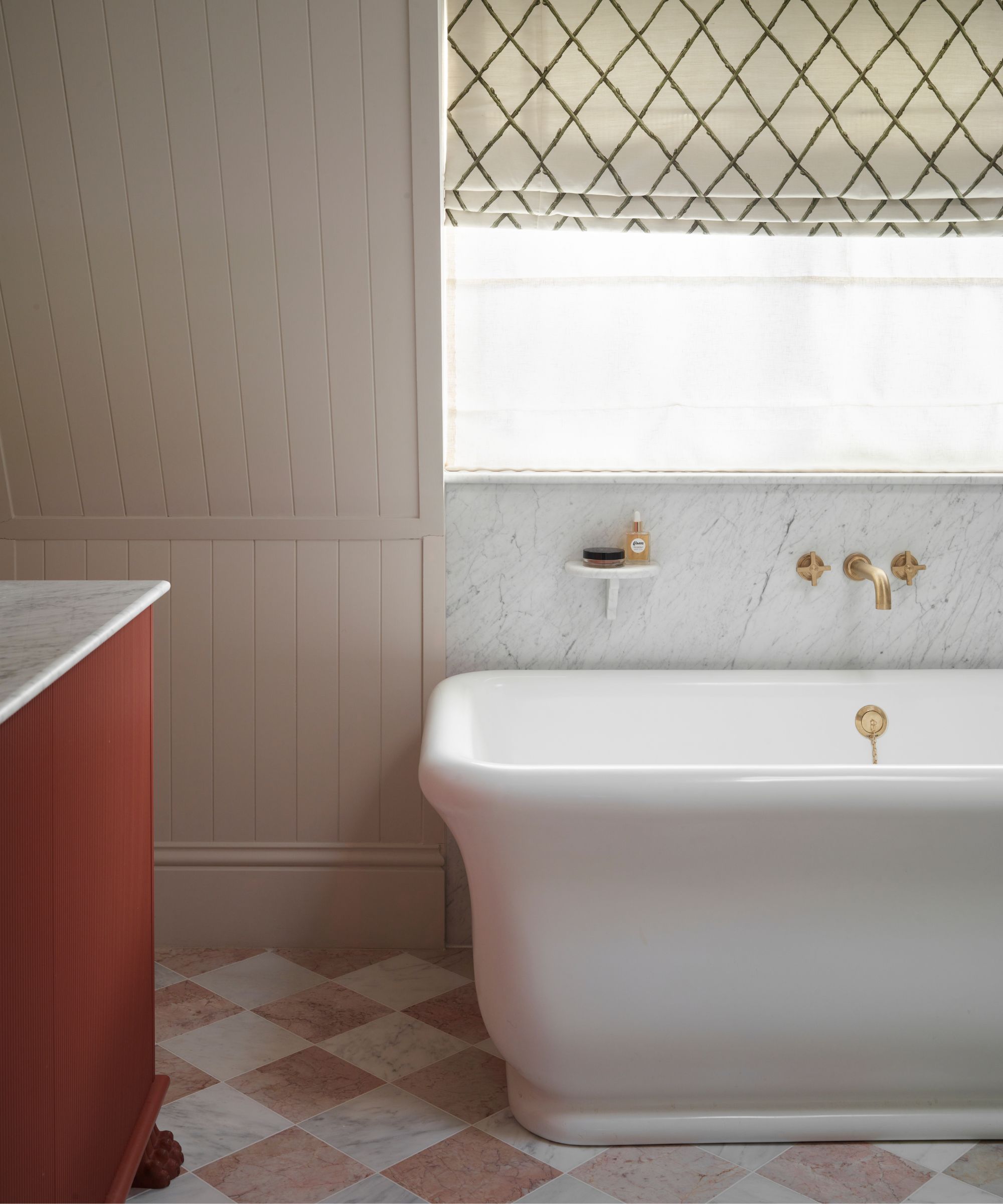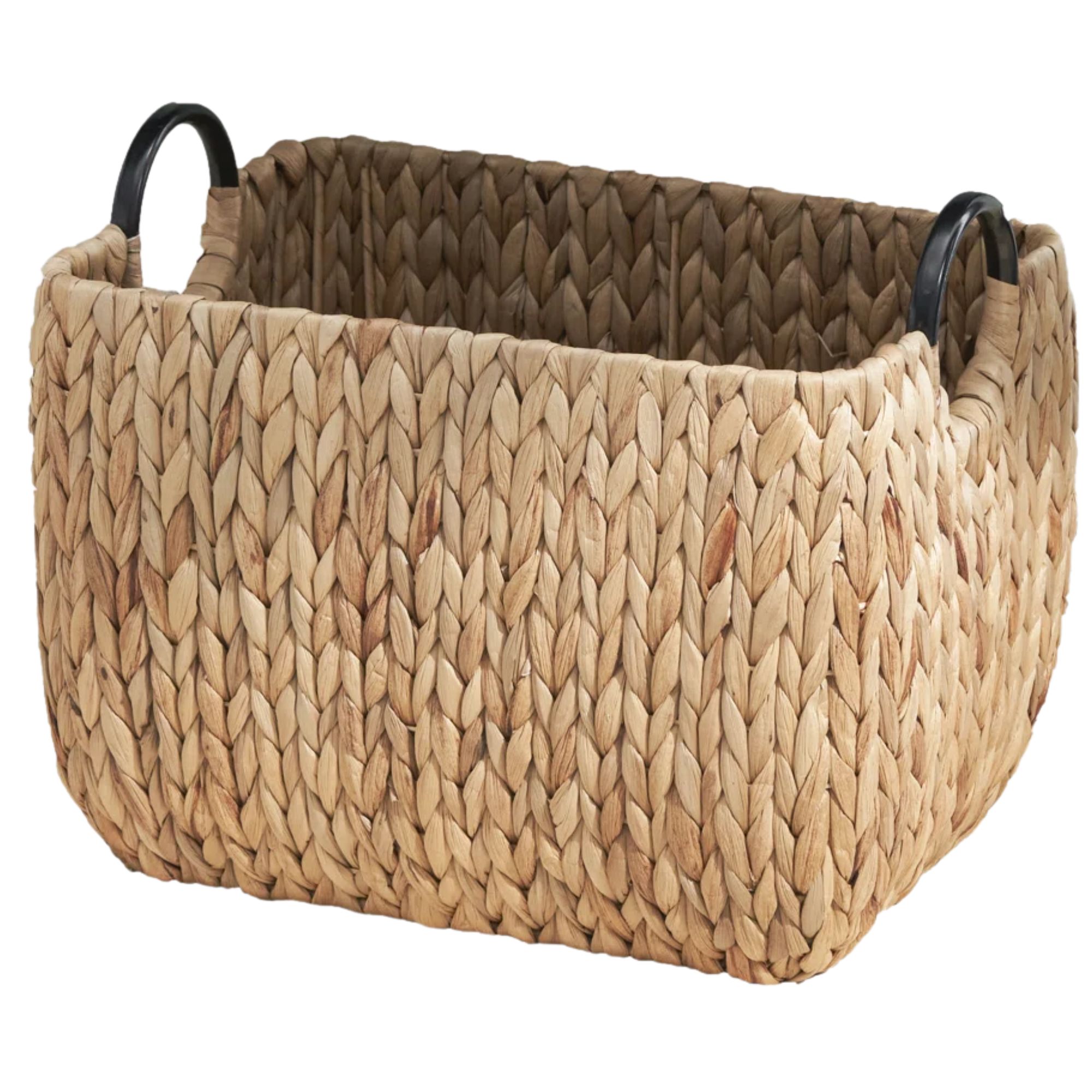
When you want to get started decluttering your home, it can often feel difficult to know where to start, and even a little overwhelming at times.
Enter: the 20/20 decluttering rule, one of the best and most effective decluttering tips when it comes to quickly making decisions and successfully clearing clutter without unnecessary stress.
Here, professional organizers explain everything you need to know about this clever technique, including how it works and whether it's the right approach for you.
What’s the 20/20 rule for decluttering?
The 20/20 rule is simple: If you can replace something in less than 20 minutes for less than $20, you don’t need to keep it.
The core theory behind the 20/20 rule for decluttering is that you’re unlikely to have to replace the items you decide to let go, leaving you with a home that’s easier to clean and, therefore, easier to manage.
And, if you do find yourself needing to replace them, you'll only need $20.
Key voices in the modern decluttering movement belong to Joshua Fields Milburn and Ryan Nicodemus, aka, ‘The Minimalists’ who champion living well with less and maximising the functionality of your home.
Design expertise in your inbox – from inspiring decorating ideas and beautiful celebrity homes to practical gardening advice and shopping round-ups.
After a life dedicated to building up possessions, in 2011, they left their corporate careers and embarked on a simpler, more meaningful lifestyle based on the principles of minimalism. Essentially, they simply embraced living with less 'stuff.'
They claim that clutter builds as a result of our ‘just in case’ thoughts, which is the main principle behind the Dot and Ditch decluttering method, too. We hold onto items in the worry that we might one day need them, yet the likelihood is they’ll remain unused, taking up valuable space and contributing to a cluttered home – and a cluttered mind by default.
Think of coffee mugs you never actually drink from, clothing that’s no longer your style, books you’ve already read, duplicate toys, kitchen appliances you never use, and so on. It's particularly useful if you're struggling to declutter when you feel overwhelmed, too.
So, how do we distinguish between those ‘just in case items’ that are worth keeping and those that can be let go when we're looking for decluttering methods to avoid any decluttering mistakes, and even to let go of cherished things?
The 20/20 decluterring rule is perfect for this.
How does the 20/20 decluttering rule work?

Learn to let go of 'just in case' items that you almost never actually need.
As Susan Santoro of Organized 31 advises, the 20/20 decluttering rule is designed to help you declutter those smaller, everyday items you’ve held onto ‘just in case’, but likely will never need.
‘Go through each item and for those you’re struggling with, ask yourself these two questions: can I replace this item for $20 or less? Can I replace this item in 20 minutes or less? If the answer is yes to both, let it go – rest assured knowing you can easily replace it if you do need it in the future,' she says.
'If you answer yes to one of the questions, give extra thought to whether you really need to keep the item for a ‘just in case’ situation.'
For these, you can use a maybe box when decluttering, and review them later down the line, setting a calendar alert to remind you to take the time to do so.
As The Minimalists Joshua and Ryan claim in their book Essential: Essays by The Minimalists, available at Amazon, they've rarely had to replace a just-in-case item, stating that it's happened fewer than a surprising five times for the two of them combined. And, when they have had to, they've never had to pay more than $20, or go more than 20 minutes out of their way to replace the item.
'This theory likely works 99% of the time for 99% of all items and 99% of all people – including you’, they assure.
What to declutter with the 20/20 rule

The 20/20 rule can be used to declutter everything and anything.
The best part about the 20/20 rule for decluttering, say The Minimalists, is that is can be used anywhere around your home, to declutter anything and everything.
In fact, once you start working through your home, you’ll be amazed at how many everyday objects you can do without.
If you’re finding the process of getting rid of items hard, think about donating or selling decluttered items to people that will truly benefit; imagining their happiness can help you change your mindset of letting go from a negative to a positive one.
Use the Pile Decluttering Method to separate these items, popping them in a storage basket, such as the bestselling Homezone Natural Handwoven Seagrass Basket available at Walmart, to keep them organized and categorized as you go.
The 20/20 rule is also a great help to get you started on the small things. Often it’s emotion that’s holding you back, particularly when decluttering sentimental items, so this will help you take a more practical approach to the task.
How to declutter with the 20/20 rule

Adapt the 20/20 decluttering rule to suit your space, and your needs.
There’s no right or wrong answer to this – it’s really up to you. However, there are areas of the home where the 20/20 rule is likely to be more effective, particularly those where you'll find plenty of items to declutter in under an hour. This is something to bear in mind if you’re looking to boost confidence.
For example, says Aricia Shaffer, professional organizer and life coach, ‘A bathroom is usually one of the easiest rooms to start, as there’s less likely to be things of sentimental value in there.
'Once you’ve worked through toiletries, medicines, and make-up, you’re halfway there already.'
Don't forget about decluttering expired bathroom products either, taking notes from the expiry decluttering method, which should be quick and easy to remove and place straight into a trash bag.
The same can be said for decluttering a pantry, getting rid of any food items that may have expired before you've had a chance to use them.
Will the 20/20 rule help solve every decluttering dilemma? No. Items that don’t fall into the ‘under 20 minutes, under $20’ categories will require a different strategy.
But, it is ideal for smaller, everyday items, and it’s often these that make up the bulk of your clutter.
What to shop
All prices were correct at the time of publication.

Read the book that started the 20/20 decluttering rule, with this collection of essays by The Minimalists, as featured in The New York Times, Forbes, Wall Street Journal, and more.

Corral items ready for donation or selling in this gorgeous water hyacinth basket, with convenient handles for carrying to and from your car, and a durable woven design.

Read Joshua and Ryan's debut book, written after they both walked away from their corporate careers in favor of embracing minimalism.
FAQs
Can the 20/20 decluttering rule save me money?
Yes, it can. In order to maintain a decluttered home, it’s important to remain mindful of the principle behind the 20/20 rule, not just when assessing existing items, but before bringing anything new into your home, too.
Think like a minimalist: Before buying anything, try and separate what you really need from a ‘just in case’ purchase, and always have in mind where you think it’ll go. This is an effective way to stop clutter before it starts.
Adopt a ‘bouncer’ attitude to your home and allow for a ‘one in, one out’ policy’, advises professional organizer Lucy Mansey of Organised by Lucy. 'If you buy something, think about what may need to be donated or given to a friend to ensure items don’t build up,' she says.
Should I organize or declutter first?
Decluttering must come first if you want to maximize space and live more minimally. After all, organized clutter is still clutter.
‘We like to add another 20 to the rule – 20 minutes for cleaning,' says Stefan Bucur of The Rhythm of the Home. 'This is for those times when you’re not feeling motivated or you’re feeling overwhelmed at the thought of cleaning a whole house. Taking 20 minutes every week to speed clean will keep everything in place and clutter at bay. '
Meet our experts

New York Times–bestselling authors Joshua and Ryan, also known as The Minimalists, have been described by The New Yorker as 'sincere prophets of anti-consumerism,' and featured in Time, Architectural Digest, GQ, and more.

Susan has moved into over 25 homes across 12 different states and three foreign countries, so she knows better than anyone how to streamline your space and cut unnecessary clutter from your life.

With work featured in Reuters, CNN, USA Today, Huffington Post, The Wall Street Journal, and more, Alicia is a certified professional life coach, a certified professional career coach, a certified professional retirement coach, and a professional organizer.
Are you making any minimalist decluttering mistakes, that may be making your life harder? From being too reckless with your decluttering to overshopping, avoiding these pitfalls is the key to streamlining success.

Ottilie joined Homes & Gardens in 2024 as the News Writer on Solved, after finishing a Master's in Magazine Journalism at City, University of London. Now, as the Sleep Editor, she spends her days hunting deals and producing content on all things sleep – from mattresses and sheets to protectors and pillows, all of which she tests in her own home. She also has particular expertise in home fragrance, covering everything from candles to reed diffusers.
Previously, she has written for Livingetc and Motorsport Magazine, and also has a Master's degree in English Literature and History of Art from the University of Edinburgh, where she developed a love for inspiring interiors and architecture.
- Tara KingContributing Editor
